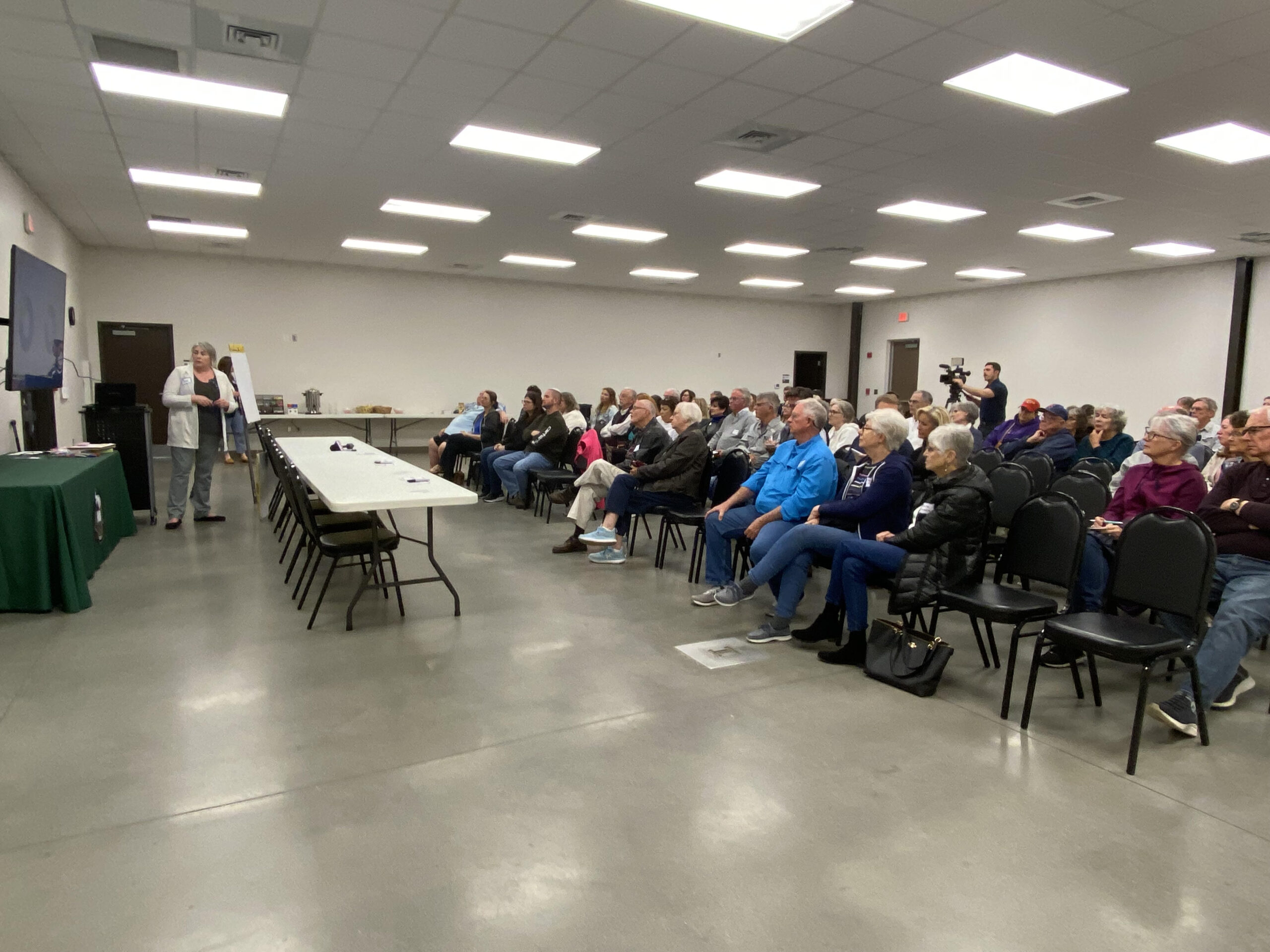FOLEY – Residents are pleased with the quality of life, public safety and many other aspects of living in Foley, but some are concerned about the rapid rate of growth and the impact on traffic and infrastructure.
Foley held three public meetings Wednesday and Thursday to meet with residents in preparation for the creation of a strategic plan for the city. The forums were held at the Graham Creek Nature Preserve, Foley Senior Center and Foley United Methodist Church.
Wayne Dyess, Foley executive director of infrastructure and development, said the information from residents will help the city set priorities and develop a strategic direction for Foley.
“We hope this turns out to be a very, very positive process so we can plan Foley for the future and really, make sure that we create a place wherever everybody wants to live and maintain our services in the future,” Dyess said.
The city is working with the consulting firm of BerryDunn to develop the plan. Karen Whichard, a senior consultant with BerryDunn, said the plan will help Foley set guidelines for how to prepare for the future.
“This is a community, as we all know, that’s undergoing tremendous change. There are a lot of needs. There are a lot of items to prioritize. There are limited resources,” Whichard said. “So, how does a city create a five-year plan that gets to where it wants to go, allocates the resources appropriately, makes sure that there’s the staff to do the work, makes sure that there’s the capital planning to build the roads or the sidewalks, taking the community to where it needs to be in five years?”
Meeting organizers asked participants for words or phrases that described Foley. Some of the submissions included both concerns, such as growth and traffic, and compliments, such as good climate, clean and friendly, safe, functional, welcoming and friendly.
The city has been conducting a survey as part of the plan process. Residents can take the survey by going to the city website at www.cityoffoley.org
Some initial results from the survey found that most respondents felt that the quality of life is good in Foley. More than 70% of respondents said that the quality of life in Foley was good or excellent.
Respondents also said that the city has well-maintained parks and that they feel safe.
Results were split on issues such as affordability of housing. Asked if people could find affordable housing, about 30% were neutral, more than 25% disagreed and more than 15% strongly disagreed.
Respondents were also split on the question of whether drivers could get around easily in Foley. Whichard said such a division was unusual in such surveys.
“This one was more mixed,” she said. “Many people, over 40% agree or strongly agree, but a lot of neutral and a lot of disagree or strongly disagree. This one usually in communities we see this one way or the other. Y’all are unique in the fact that those answers are a little bit across the board.”
Transportation was a key issue for both survey respondents and residents at the meetings.
Dyess said Foley is working to improve local roads, but the main highways through Foley, Alabama 59 and U.S. 98, are maintained by the Alabama Department of Transportation and are not under city control.
The city budget for 2024 includes $18.3 million for streets, Jen Ferguson, a senior consultant with BerryDunn, told meeting participants. She said about $11.36 million of that total will come from grants.
The money is part of $76.5 million for capital projects in the current budget.
Asked what are some things that the city could do better, more than 80% cited the need for transportation infrastructure, such as roads, sidewalks and public transportation. The next highest response was community development, such as building permitting and inspections, at more than 40%.
Among the issues that respondents said the city does well were public safety and parks and recreation with more than 60% of the responses citing those categories in the survey.
In the meetings, many residents said the city needs to manage growth. Foley’s population has grown from 14,618 in the 2010 census to 21,113 in 2022. Current estimates are that the city’s population is about 25,000.
During discussions at the meetings, some participants expressed concerns about Foley’s rate of growth and development. Recommendations from residents included ways to moderate growth, such as moratoriums on buildings, better oversight of construction, lot restrictions, improving turn lanes and finding ways to improve traffic flow.
Other recommendations included improving recreation, improving medical services, flood control, improving green spaces and making the city more walkable.
Foley’s demographics have changed since the 2010 census, Ferguson said.
The percentage of children younger than 5 dropped from about 6 to about 3. The percentage of young people 6 to 19 also dropped. Percentages for adults 20 to 34 and 35 to 64 remained about the same. The percentage of adults 65 and older in Foley increased from slightly more than 20 to more than 30.
The median household income is $60,090 and the median home value is $236,000. The percentage of residents with a high school diploma is 89.1 and 10.7% of Foley residents live in poverty.
City officials and plan organizers will take the information from the survey and meetings and use the data to prepare a draft plan to be considered by the City Council later this year.
A copy of the presentation is also available at: https://s3-us-west-2.amazonaws.com/mysocialpinpoint/uploads/redactor_assets/documents/7b28a8e0d75cd3e60eca262046c793b8047a2f963c88bdeb1d692020f5f5c71d/89100/City_of_Foley_Environmental_Scan_Initial_Final.pdf



